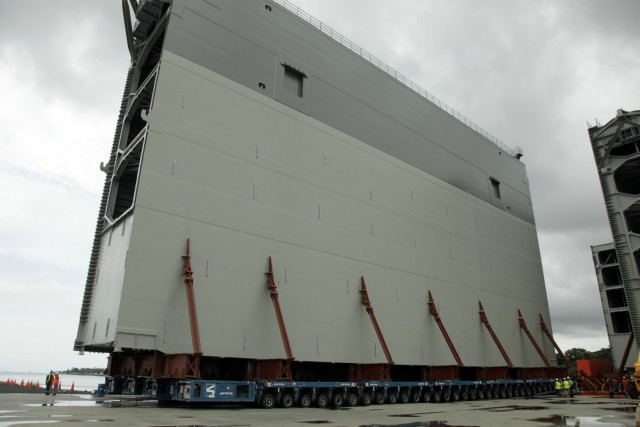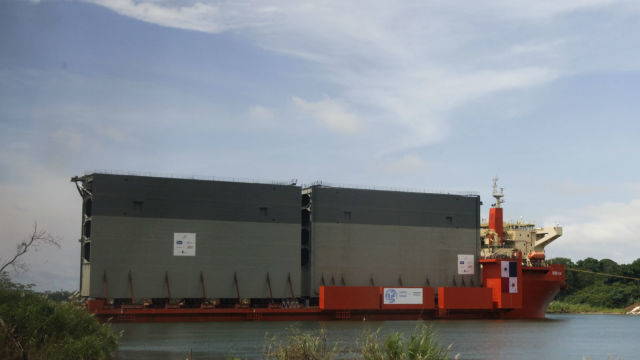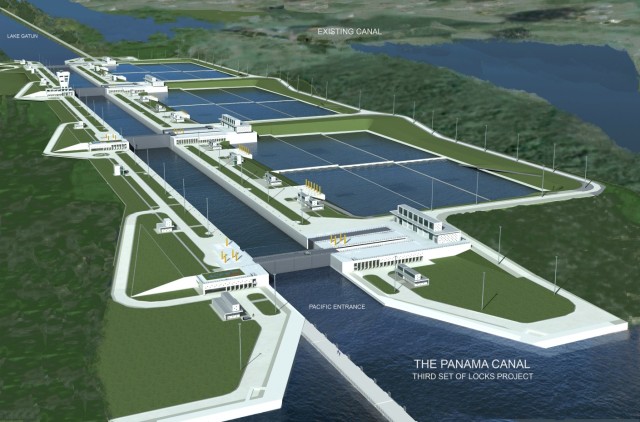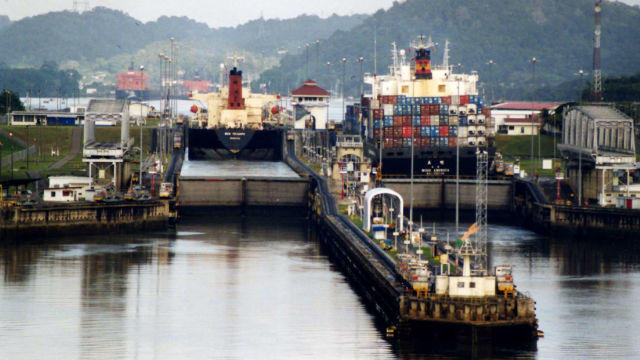The Panama Canal's New and Upgraded Gates are Indeed Gargantuan
2014.03.12

The Panama Canal revolutionized global shipping by linking the Pacific and Atlantic oceans when it opened nearly a century ago. But the canal's capabilities are fast being outpaced by the ever-growing ships that pass through it.
To accommodate the next generation of over-sized vessels, the Panama Canal is getting its biggest upgrade in 93 years - a third channel hemmed in by these gargantuan flood gates.

Each of these 16 gates is built by Italian steel manufacturer Cimolai, standing at nearly 10 storeys tall. Weighing an estimated 3,100 tons, it costs a whopping $34.2 million to produce and install. Eight will be installed on each end of the new third channel as part of an eight-year $5.2 billion public-works project designed to double the shipping lane's capacity b y 2015.

The expansion project was originally proposed by then-president Martín Torrijos in 2006 and billed as vital to Panama's future prosperity. Later that year a public referendum saw 76.8 percent of Panamanians vote in support of the project, as did the national assembly.
The expansion plan calls for not only digging out the third channel started by the Americans in 1939, but abandoned at the outset of WWII in 1942, but deepening and widening the two existing channels and raise the maximum operating level of Gatun Lake too.

The existing channels can only support current Panmax vessels less than 115 feet wide and 1,050 feet long with a draft of 41 feet or less. The new locks, however, will be 1,400 feet long, 180 feet wide, and 60 feet deep, allowing naval engineers to design larger "New Panmax" supply ships.
Using only the power of gravity, a series of 18 water-saving basins will fill and empty these locks, just as the current channels do, as ships pass from one end to the other. But the new channel will not rely on locomotives to position vessels within the locks, instead they'll rely on more modern tugs.
[Wired, Wiki]
More Articles
Copyright © Fooyoh.com All rights reserved.